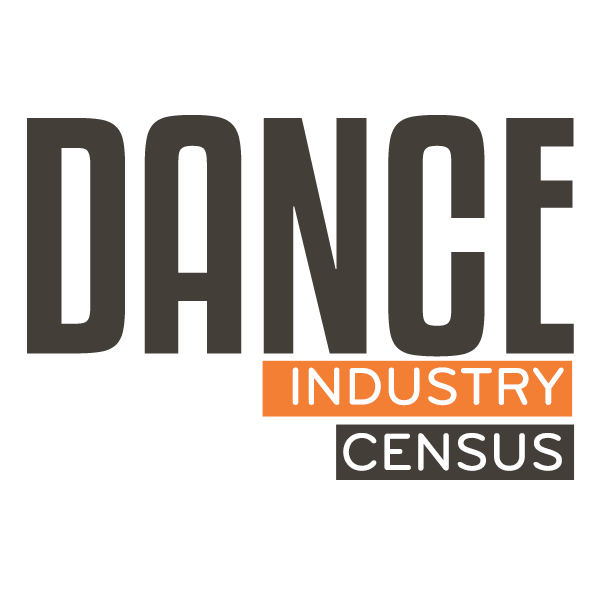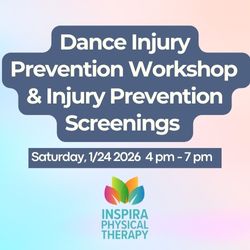Dance/NYC Announces Dance Industry Census
Wednesday, July 13, 2022
Dance/NYC Announces Dance Industry Census
Wednesday, July 13, 2022
Dance/NYC Announces Dance Industry Census
New York, NY (For Immediate Release) – The dance service organization Dance/NYC today announced the launch of the Dance Industry Census, a first-of-its-kind effort to count every individual dance worker, dance-related business, and organization based in the metropolitan New York City area which includes the five boroughs, Westchester, Rockland, Nassau, and Suffolk counties in New York state; and Hudson and Bergen counties in New Jersey. The Dance Industry Census will launch on Wednesday, July 20, 2022, via Dance.NYC and will close on October 31, 2022. More information is available at Dance.NYC/DanceIndustryCensus.
A coinciding launch party will take place on July 20, 2022, at Mark Morris Dance Center in the James and Martha Duffy Performance Space at 3 Lafayette Ave, Brooklyn, NY 11217 at 7:00 p.m. ET. The public is welcome to attend this event by registering at Dance.NYC/DWRLaunch. The celebratory event will be open to the media.
The Dance Industry Census will investigate inequities in the dance workforce that exist at the individual and systemic levels, including wages, working conditions, and access to funding. Data gathered will also help acknowledge the contributions made by disabled, immigrant, Black, Indigenous, and peoples of color to the sector, and in doing so, close the gap of understanding that allows inequitable access to resources and underinvestment into these communities to persist. This information will form a comprehensive picture of the dance workforce—who they are, where they are, how they are making dance and what they need to thrive—and will guide Dance/NYC’s Dance. Workforce. Resilience. Initiative. As a central component in case making to legislators, funders, and investors, data from this study will be used to advocate for meaningful change in policies and practices that directly impact the dance industry and its diverse set of workers, businesses, and organizations.
“Among all the arts disciplines in New York City, the dance workforce is the least protected, as it is the least unionized, and lacks worker benefits, protections, and wage and contracting standards,” said Dance/NYC Executive Director Alejandra Duque Cifuentes. “In order to better serve the diversity of the dance workforce, it is imperative to have a clear picture of who we are and the actual experiences of our community. The Dance Industry Census aims to do this–equipping both individuals and organizations with the framework for advocacy work that we can use to build a better infrastructure for the sector. Similarly, dance businesses and organizations have the least access to funding and investment when compared to other performing art forms, despite their significant contributions to the local economy. This means the dance workforce doesn't have the policies, funding, or support to sustainably reach its greatest creative potential. The Dance Industry Census hopes to provide the data to help change that.”
“This census of dance workers is a critical first step in transforming our city into a place where creative workers are recognized, valued, and able to make a living,” said Lucy Sexton, Dance. Workforce. Resilience. Initiative Task Force Member and Executive Director of New Yorkers for Culture & Arts. “Dancers are the most unsupported segment of the city's creative economy—which generates billions of dollars for NY.
“Dance artists and workers are vital and necessary creators of New York City’s vibrant culture,” said Yanira Castro, Dance. Workforce. Resilience. Initiative Task Force Member and Individual Artist. “We bring joy, awe, inspiration, and energy to the streets, theaters, museums and ballrooms of this city. And we—like all workers—deserve equitable pay, full disability access, and joyful and just working conditions to thrive.”
.jpg)
Still from “Childish” by Ava Luna, choreographed by Elisa Hernandez; directed by Becca Kauffman and Bucky Illingworth; DP by Zach Stone; lighting by Eric Bowers; PA by Gerard Marcus; Dancers from left to right: morgaine de leonardis, Felicia Douglass, Yolette Yellow-Duke, Emily LaRochelle
Dance/NYC embraces an inclusive definition of “dance worker” that recognizes the many roles and positions that are essential to making dance work happen, including but not limited to: dancers, choreographers, and directors; dance teachers and studio personnel; dance presenters and producers; musicians and accompanists; photographers and videographers; lighting, costume, and scenic designers; stage managers and production professionals; writers, journalists, critics, and dramaturgs; researchers, scholars, educators, and academics; wellness providers and practitioners; managers, agents, and publicists; and dance administrators and service providers. Additionally, the Census will also provide greater transparency around dance businesses’ and organizations’ structures highlighting their significance to the creative economy and impact on the overall well-being of local communities.
“The Dance Industry Census is a much needed breath of fresh air. Understanding ourselves— artists—as workers and laborers is imperative for our solidarity with other laborers as well as for collectivizing towards better and best practices in our field,” said Maria Bauman, Dance. Workforce. Resilience. Initiative Task Force Member; Co-founder of Artists Co-Creating Real Equity; Artistic Director of MBDance. “Additionally, knowing that low wage workers in this country are statistically majority Black, Indigenous, and peoples of color, helps us understand that working class solidarity among artists is not just about class, but also about understanding race dynamics.”
Dance/NYC designed this two-pronged survey effort in order to collect economic, social, and demographic data that reflects the experiences of both individual dance workers and dance organizations, businesses, groups, and projects. Starting on July 20th, the Census can be filled out online at Dance.NYC/DanceIndustryCensus on mobile or desktop interfaces, or completed in person on Survey Days at designated Survey Sites throughout the metropolitan NYC area. The survey will be followed by a series of borough- and region-specific Town Hall convenings aimed at collecting qualitative data through facilitated community discussions. Data will be analyzed by Dance/NYC and presented in aggregate form in Dance/NYC’s State of NYC Dance research report, to be published in June 2023.
The Dance Industry Census is made possible, in part, by leadership support from the Mellon Foundation, The New York Community Trust, the Doris Duke Charitable Foundation, the Mertz Gilmore Foundation and a coalition of general operating support funders, and by public funds from the New York City Department of Cultural Affairs, in partnership with the City Council, the New York State Council on the Arts with the support of the Office of the Governor and the New York State Legislature, and the National Endowment for the Arts. The Dance Industry Census is conducted in partnership with research consultant Carrie Blake of Webb Mgmt.
About Dance/NYC:
Dance/NYC’s mission is to promote and encourage the knowledge, appreciation, practice, and performance of dance in the metropolitan New York City area. It embeds core values of justice, equity, and inclusion into all aspects of its programs and operations. Dance/NYC remains committed to delivering programs that address disparities in the dance field by continuing to fill gaps in the availability of resources where they are most needed. It believes the dance ecology must itself be just, equitable, and inclusive to meaningfully contribute to social progress and envisions a dance ecology wherein power, funding, opportunities, conduct, and impacts are fair for all artists, cultural workers, and audiences.
Visit https://www.Dance.NYC/
###
Instagram @dance.nyc Twitter @DanceNYC Facebook @DanceNYCorg
Media Contacts:
Ayofemi Kirby
ayofemi@itseleventhirtysix.com
Michelle Tabnick
michelle@michelletabnickpr.com




